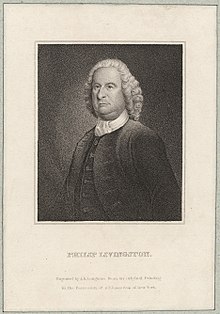
William Livingston was an American politician and lawyer who served as the first governor of New Jersey (1776–1790) during the American Revolutionary War. As a New Jersey representative in the Continental Congress, he signed the Continental Association and the United States Constitution. He is considered one of the Founding Fathers of the United States and a Founding Father of New Jersey.

Philip John Schuyler was an American general in the Revolutionary War and a United States Senator from New York. He is usually known as Philip Schuyler, while his son is usually known as Philip J. Schuyler.
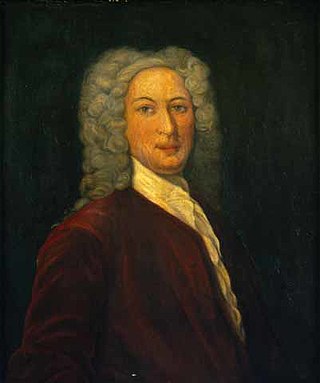
Philip Livingston was an American merchant, slave trader and politician in colonial New York. The son of Robert Livingston the Elder and elder brother of Robert of Clermont, Philip was the second lord of Livingston Manor.
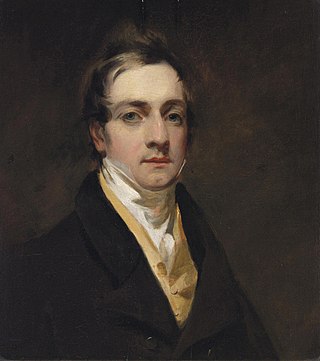
Peter Van Brugh Livingston was a Patriot during the American Revolution who was a wealthy merchant and who served as the 1st New York State Treasurer from 1776 to 1778.

John Henry Livingston was an American Dutch Reformed minister and member of the Livingston family, who served as the fourth President of Queen's College, from 1810 until his death in 1825.
Robert Le Roy Livingston was a United States representative from New York.
James Livingston, born in New York, was an American Patriot. Livingston was living in the Province of Quebec when the American Revolutionary War broke out. He was responsible for raising and leading the 1st Canadian Regiment of the Patriots' Continental Army during the invasion of northeastern Canada, and continued to serve in the war until 1781. He retired to Saratoga, New York, where he served as a state legislator and raised a family of five children.
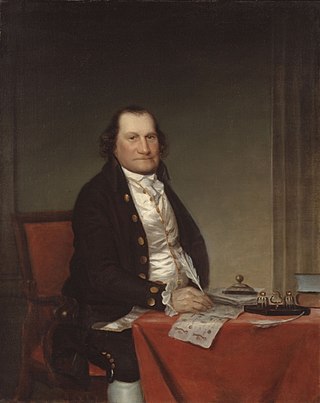
Abraham Ten Broeck was a New York politician, businessman, and militia Brigadier General of Dutch descent. He was twice Mayor of Albany, New York and built one of the largest mansions in the area, the Ten Broeck Mansion, that still stands more than 200 years later.

The Livingston family of New York is a prominent family that migrated from Scotland to the Dutch Republic, and then to the Province of New York in the 17th century. Descended from the 4th Lord Livingston, its members included signers of the United States Declaration of Independence and the United States Constitution. Several members were Lords of Livingston Manor and Clermont Manor, located along the Hudson River in 18th-century eastern New York.
The New York Provincial Congress (1775–1777) was a revolutionary provisional government formed by colonists in 1775, during the American Revolution, as a pro-American alternative to the more conservative New York General Assembly, and as a replacement for the Committee of One Hundred. The Fourth Provincial Congress, resolving itself as the Convention of Representatives of the State of New York, adopted the first Constitution of the State of New York on April 20, 1777.

Dirck Ten Broeck was an American lawyer and politician. The first name is sometimes given as Derick.
Edward Livingston was an American attorney and politician. He served as Clerk and Speaker of the New York State Assembly.
Hendrick van Rensselaer was director of the Eastern patent of the Rensselaerswyck manor. The estate was composed of land in Columbia County, New York, and land opposite Albany, New York, on the Hudson River, named Greenbush.
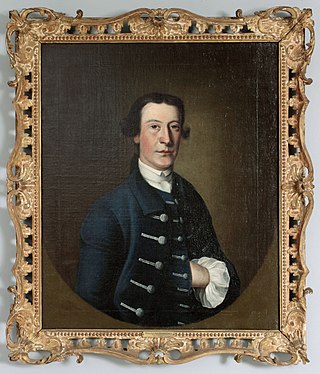
Stephen van Rensselaer II was the sixth and youngest child of Stephen van Rensselaer I and Elizabeth Groesbeck. He served as Lord of the Manor of Rensselaerswyck.
Eilardus Westerlo was a Dutch Reformed minister who worked in Colonial New York. He spent his career, from October 1760 until December 1790, as pastor of the Dutch Reformed Church in Albany. During this period, the United States fought for its independence, and the Dutch Reformed Church in North America gained its independence from the mother church in the Netherlands.

Catherine Van Rensselaer Schuyler was a Colonial and post-Colonial American socialite and the matriarch of the prominent colonial Schuyler family as wife of Philip Schuyler.
Dirck Ten Broeck Served as Mayor of Albany, New York from 1746 to 1748.
Dirck Wessel Ten Broeck was an American landowner, soldier, politician who served in the 1st and 2nd New York State Legislatures.
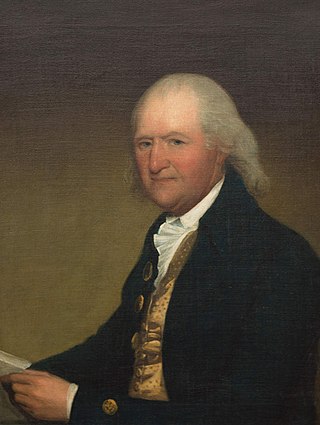
Petrus "Peter" Stuyvesant was a New York landowner and merchant who was a great-grandson of his namesake, Peter Stuyvesant, the last Dutch Director-General of New Amsterdam.
Lt.-Col. Hubertus "Gilbert" Livingston was a younger son of Robert Livingston the Elder who was a lawyer and politician in colonial New York.
